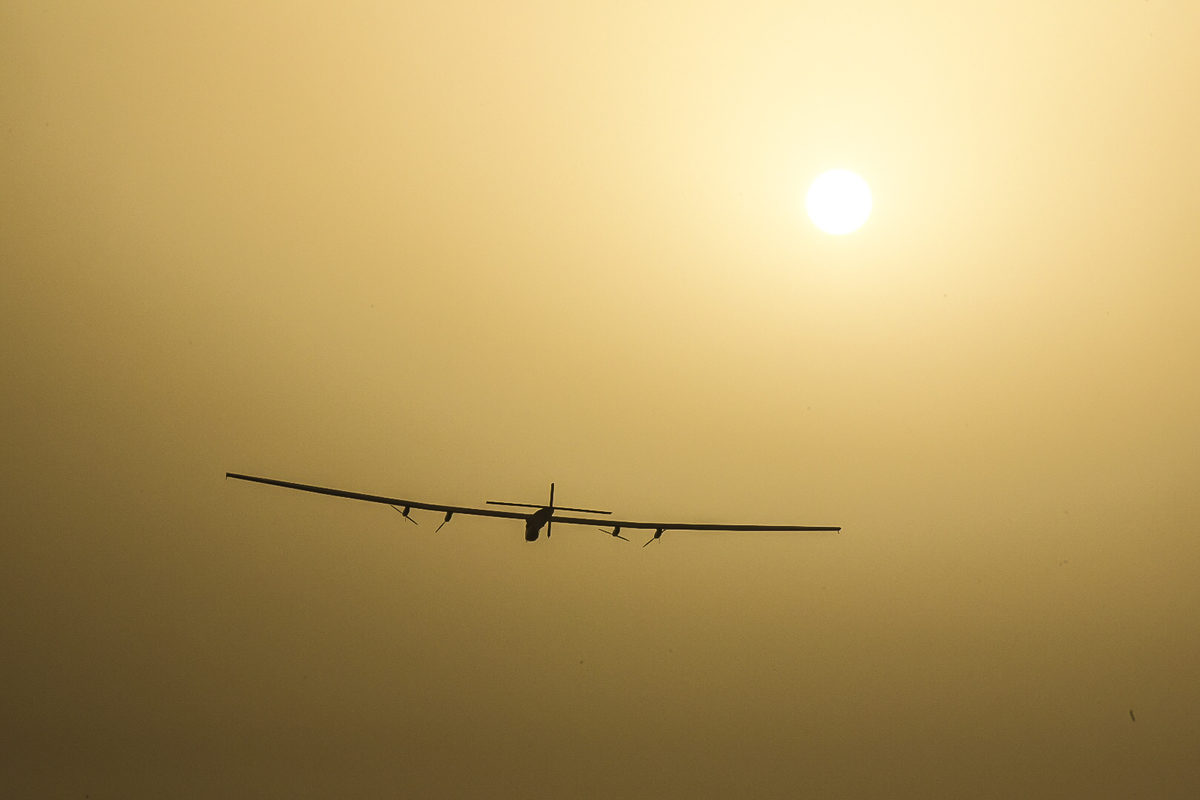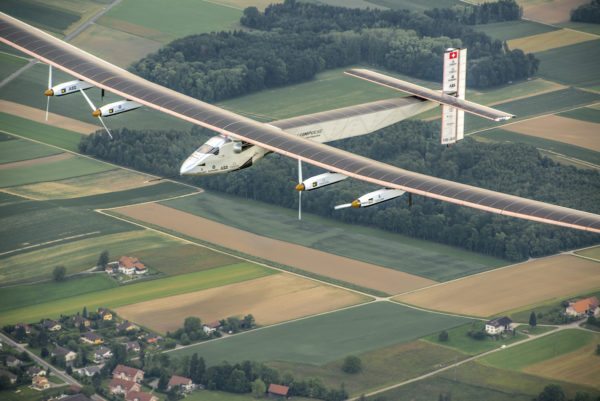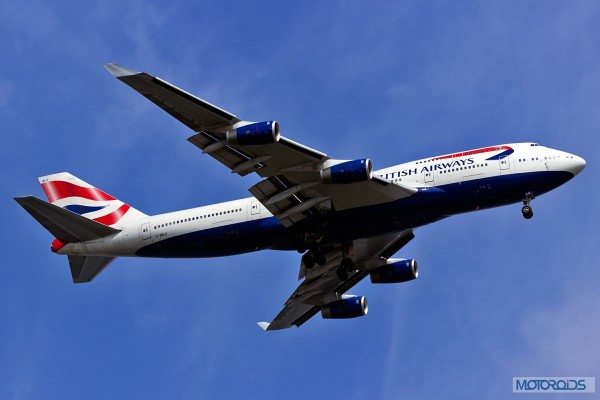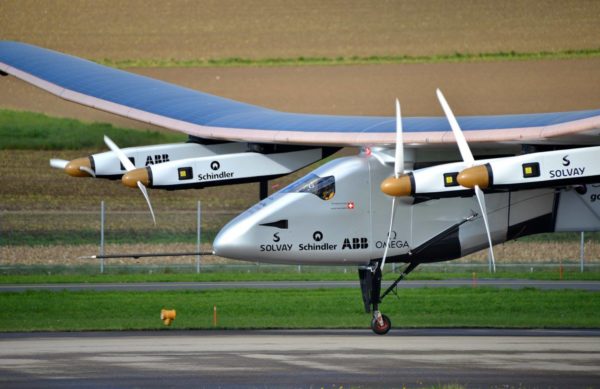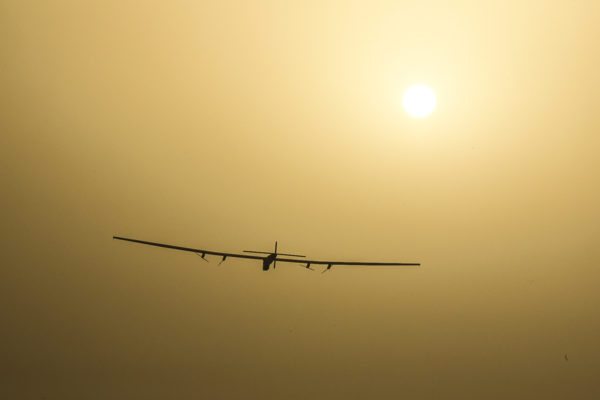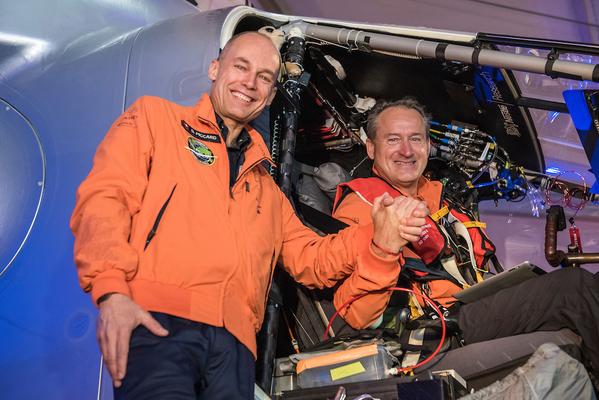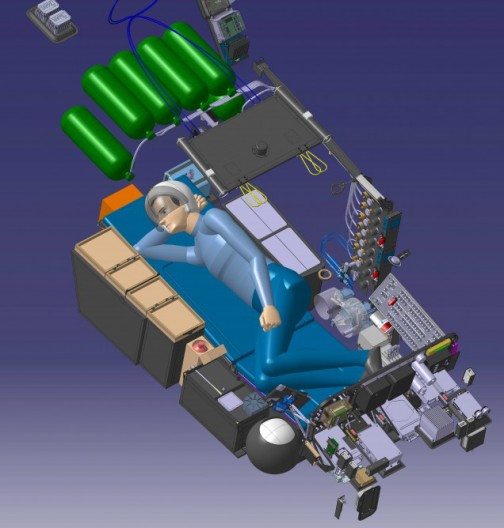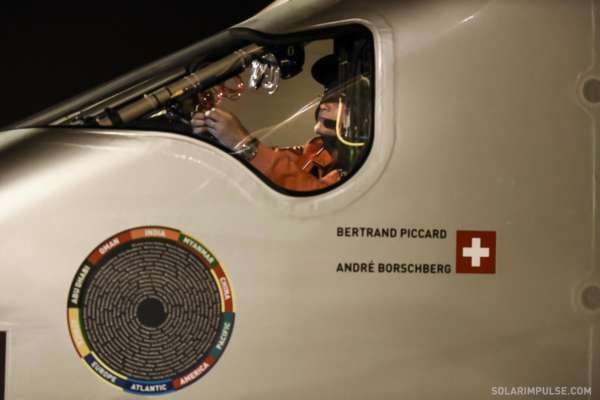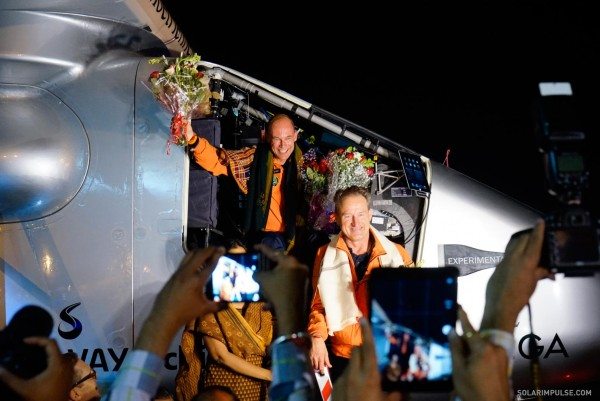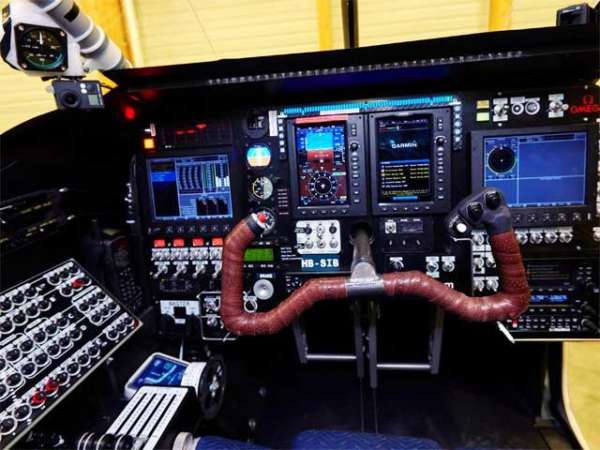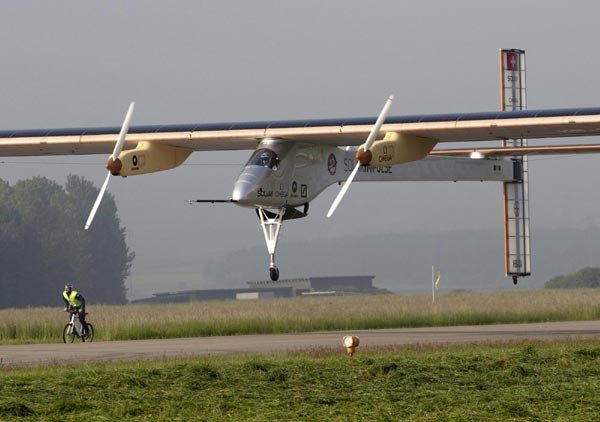Solar Impulse 2 (Si2) in flight.
Aviation – From fantasy to reality:
Ever since time immemorial, man has always dreamt of taking flight. The sight of birds soaring in the big blue sky, was a sight too good to be left unachieved. However, it wasn’t until 1903, that human flight actually became reality, thanks to the Wright brothers. The invention of powered-flight was all down to the existence of internal-combustion, fossil-fuel burning engines. From this point on, aviation took-off, quite literally. Just so you know, the Wright brothers’ first flight, lasted just a few seconds and the distance they covered, is equivalent to the size of an economy class cabin of a Boeing 747-400. Talking of the 747, the 4 jet engines that power this massive bird, guzzle fuel at the rate of at least 4 litres per second during cruise. And the wings of the 747-400, stretch wider than the distance covered by the Wright brothers’ first flight! Modern-day commercial airliners can comfortably cruise at over 35,000 feet and fly at over 900 km/h. All thanks to aerodynamics and powerful, yet efficient jet engines.
The Boeing 747-400 has a wingspan of 64.4-metres (almost 212 feet).
As impressive as jet-powered flight sounds, solar-powered flight is far more challenging and a lot less harmful to the delicate planet and her atmosphere. Also, as solar-powered flight takes advantage of the most powerful thing in our solar system, the Sun, it is an unlimited source of fuel. And unlike fossil-fuel burning jet aircraft, solar-powered aircraft do not release any harmful pollutants into the atmosphere and are far less noisy. In fact, they hardly make any significant noise, if at all.
The Si2 has a wingspan of 72 metres (236 feet), wider than the wings on a 747.
The machine and the people involved:
The Sun is Si2’s best friend and fuel source.
It took almost 12 years of painstaking research and development, to create the Solar Impulse 2. As number ‘2’ in the name suggests, this is the second aircraft of its kind. The first Solar Impulse was more of an experimental test-bed and was created to perfect the technology and innovations that went into the making of its successor. The single-seater Si2, has a wingspan of 72 metres (236 feet) and weighs only 2.3 tonnes, all thanks to the extensive use of carbon-fibre. To put that into perspective, the Boeing 747-400 weighs nearly 400 tonnes! The extra wide wing is covered with over 17,000 solar cells that power 4 electric motors that have super-efficient 4-metre long propellers attached to them, two such motors lie on each wing.
Take-off speed of this bird is just a piffling 47 km/h and the Si2 can leave terra firma within 150 metres. A normal jet-powered airliner, takes-off at no less than 250 km/h and require around a 2000 metre runway. Top speed of the Si2 is just 140 km/h at an altitude of 27,000 feet. Though the company pointed out, that this mission isn’t about high speed, but of stamina and endurance. No current commercial airliner can manage to fly so cheaply for 35,000 km, as they use expensive jet fuel. For those wondering “Hey, how does it fly at night when there is no sunlight?” The answer is lithium-ion batteries. The same kind you find in your laptop computers and other mobile devices. These batteries get charged during the day and then power the Si2’s electric motors, avionics, lights and everything else that require electricity, at night. The specially designed autopilot system of the Si2, keeps track of all the flight parameters and constantly adjusts various flight control surfaces to keep the aeroplane flying the way it’s supposed to. The on-board systems monitor and keep a close watch on every sensor to make sure that any anomaly is detected well in advance.
The pilots of this bird, Bertrand Piccard (left) and Andre Borschbeg (right).
Talking of stamina, it’s not just the aircraft that must endure this arduous journey. The two Swiss pilots of this awesome machine and the entire ground staff, are just as important and vital for the success of this epic adventure. Andre Borschbeg and Bertrand Piccard, are the men tasked to fly this delicate bird. Piccard is known for his around the world hot-air balloon flying and circumnavigated the world in 1999. Thus, he is well aware of endurance flying (hot-air balloons aren’t exactly fast, either). Their route will take them across huge continents and vast oceans. All of this, in an attempt to prove the feasibility and environmental aspects of solar-powered flight. The biggest challenge for the men, will be the vast oceans along their route. According to former air-force pilot and engineer Borschbeg, crossing the Pacific and Atlantic ocean will be the most challenging as it will require the men to fly non-stop for many days and nights, thanks to the slow speed of the Si2. You also have to remember the fact, that at 3.8 cu.m, the cockpit isn’t exactly roomy. In fact, it is almost the same size as a four-person lift in a residential building and those aren’t very roomy, either.
That’s the tiny area of the cockpit in the Si2. Not exactly first-class flying, is it?
The pilots also have to deal with extreme temperatures as the tiny cockpit of the Si2 is not equipped with a climate-control system and the mercury can vary between -40℃ to +40℃. To protect the pilots, the cockpit is protected by high-density thermal insulation. Also, the Si2’s cockpit is not pressurised, unlike regular commercial airliners. Flying at up to 27,000 feet, the air pressure is about half of what it is at sea-level. Ever experienced the ear-popping sensation while flying? That’s because of the pressure differential between the inside and the outside of the aircraft. However, you soon get accustomed to that sensation, because commercial aircraft are pressurised and that makes it easier for us to breathe at those high altitudes.
Unfortunately for these two men, the Si2’s cockpit isn’t pressurised. Hence the need to carry oxygen bottles, otherwise the men could easily suffer from hypoxia and lose consciousness. That is not a favourable thing when flying an aircraft. Also, there’s just enough room in that cockpit, to house necessary items such as drinking water, some food, six oxygen bottles and some emergency survival gear such as life-raft, parachute etc. As far as sleep is concerned, the pilots are only allowed to have 20 minute power naps. Each pilot has come up with their own techniques to stay vigilant; Borschbeg chooses yoga, while Piccard prefers self-hypnosis. There is a dedicated team on the ground and operate out of Monaco, whilst a team of special engineers always accompany the Si2 wherever it flies. The mobile crew is also in charge of arranging for an hangar to park the Si2 in.
The journey itself:
Borschbeg prepares to leave Muscat for Ahmedabad.
The first leg of this around the world trip was completed yesterday, when the Si2 landed in Muscat, Oman. The flight had taken off from Abu Dhabi, UAE, covering 400 km and took 12 long hours to reach Muscat. The second leg will take the Si2 and its crew, over the Arabian sea and to the city of Ahmedabad in Gujarat, India. In fact, the Si2 will also be making a stop at Varanasi. The flight starts at Abu Dhabi and an expected 5 months later, is to arrive back at Abu Dhabi. This means a total mileage of 35,000 km! Impressive for an aircraft that can only do a top speed of 140 km/h. The aircraft landed at Ahmedabad’s Sardar Vallabhbhai Patel international airport at 11:25 pm IST. This was the first time, that a solar-powered aircraft has ever visited Asia, let alone India.
Welcome to India, chaps!
As we mentioned earlier, the whole journey will cover an astonishing 35,000 km around the world. The men started off at Abu Dhabi and then the first leg took them to Muscat. After taking-off from Muscat, the Si2 landed at Ahmedabad, with the next stop-over being at Varanasi. After that, the men will be stopping at Mandalay (Myanmar), Chongqing and Nanjing (China), then across the Pacific ocean to Hawaii, before proceeding to three different stops in the US (including New York). The last legs will see the men crossing Europe and North Africa, before finally ending the epic journey back where they began, in Abu Dhabi.
The future for solar-powered flight:
The action centre of the Si2, its cockpit.
The Solar Impulse 2 and the mission of the people behind it, is to prove the worth and feasibility of solar-powered flight. The primary issue with solar-powered flight was, that the cost of solar panels were sky-high. However, according to some recent studies, the cost of these special panels have dropped by almost 70%. Furthermore, their cost is on a downhill spiral and that is just a boon for the visionaries behind the Solar Impulse 2. Other surveys indicate the possibility of solar power being the primary source of electricity by the year 2050.
Slowly lifting off the ground and into the skies above.
It probably won’t be very long before solar planes take to the skies on a regular basis. Maybe, even with fare paying passengers and cargo on-board. But till that time comes along, the Solar Impulse 2 remains the best hope for solar-powered flight and for the future of solar energy. All of this, thanks to the Swiss and their unending and persistent ambition to make flying more greener and affordable. Hats off to everyone involved in this daring mission and the entire team of Motoroids would like to wish all of you the best of luck and some clear skies.
For those of you who want more information and would like to track the progress of this amazing feat of aviant adventure, visit www.solarimpulse.com and be a part of this epic journey, while being in the comfort of your home. And tell us what you think of this amazing aircraft and the dedicated team behind this adventure, in the comments section, below. Last, but not the least, we have also attached a video for you to have a look at. This video will give you an idea of how this incredible machine takes to skies.

